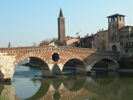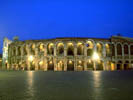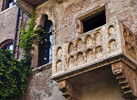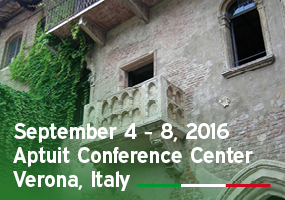Join the new EuroQSAR Series page on Linkedin!
|
Verona - Centuries of history in one city
Verona is a splendid city of art, surrounded by the traces of its ancient history, splendid in its mythical dimension bestowed upon it by the Shakespearean tragedy of Romeo and Juliet.
Roman ruins, medieval vestiges, Venetian and Austrian traces can be seen all across the city, as well as antique palaces, squares, bridges and wonderful churches. In the historical centre, Piazza Bra and the Arena, Piazza Erbe and Piazza dei Signori, Via Cappello and Corso Porta Borsari lead to the Teatro Romano, Ponte Pietra, Castelvecchio, the Ponte Scaligero and the ancient churches of San Fermo and Sant’Anastasia, the Cathedral (Duomo) and San Zeno.
Elegant cafés and ancient osterie (typical inns of the Veneto territory), craftsman shops and high couture shops enliven city life all year long. Verona is a man-sized city which fascinates visitors with its elegance and its welcoming atmosphere, in which ancient and modern times meet.
The city’s past centuries of history and its past splendour are witnessed by its architectural and artistic masterpieces; its culture and art are well renowned on a national and international level. For this reason, in the year 2000 Verona was recognized as a UNESCO World Heritage Site.
Verona: a first glimpse of the city is love at first sight, and will entice you to come back and explore it thoroughly.
Old Verona

|
As far as the quality and the preservation of its Roman antiquities are concerned, Verona is second only to Rome. Its luminous marble monuments will take you two thousand years back in time: its famous Amphitheatre, the Roman Theatre (older than the Arena), Ponte Pietra ( the "pons lapideus", the Roman Bridge built over a natural ford used by people for centuries), the Arco dei Gavi (Gavi Triumphal Arch) erected to celebrate one of the most influential families of the city.
|
Arena
 |
The Arena – Verona’s most famous monument, visited by tourists world-wide. If you contemplate it in silence, it’s not difficult to imagine it crammed with spectators as in Roman times: all you need do is shut your eyes or go to see one of the splendid opera performances held here and the Arena will come magically to life.
|
Romeo and Juliet
 |
"There is no world without Verona walls": the pen of William Shakespeare has lent Verona fame and immortality with his tale of two star-crossed lovers, Romeo Montecchi (Montagu) and Juliet Capuleti (Capulet).
The story of their tragic love is set in two precise locations - Juliet's house and the tomb. |
The Capulet House, best known as "Juliet's House", dates back to the thirteenth century. It is tower-shaped and belonged to the Dal Cappello family, whose coat-of-arms is visible above the inner arch-way of the court-yard. The brick façade is decorated by elegant gothic windows standing on either side of the famous balcony on which Juliet is said to have spoken to Romeo.
The house has several storeys and tickets can be bought to visit it. The interior contains the furniture of a typical fourteenth century aristocratic household, enhanced by a wide range of medieval ceramics. Antonio Avena's masterful restoration (carried out in 1935) brought to life the elegant frescoes within, and which highlight inlaid wooden chests, brick fireplaces, wooden staircases and landings.
|
Organisers
EFMC Sponsored Event
With the support of
Sponsors
Supported By
Media Partners
|
























